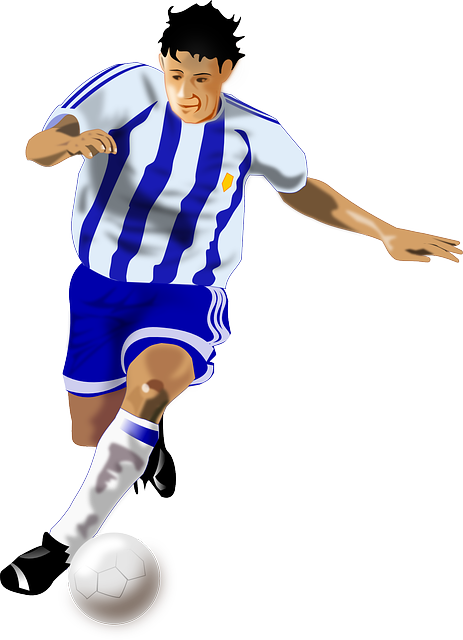Ever feel like you’re stuck in slow motion? Want to leave your competition in the dust? Maybe you’re chasing a personal best. Faster running is about more than just speed. It’s about boosted fitness, sky-high confidence, and better athletic skills.
Ready to unlock your speed potential? This article gives you simple, proven tips to run faster, today.
Perfect Your Running Form for Maximum Efficiency
Good form is the secret weapon of fast runners. It’s all about using your body in the best way. It is a total game changer.
Optimizing Stride Length and Frequency
Think of your stride as a balance. Too long, and you’re overreaching. Too short, and you’re wasting energy. The sweet spot? It depends on you. Your body, your fitness.
Try this drill: Bounding. Big, powerful steps. It builds stride length. High knees also help improve your stride. Drive those knees up!
The Importance of Proper Arm Movement
Arms aren’t just for show. They drive you forward. Keep your arms bent at about 90 degrees. Swing them straight, not across your body. It’s like a pendulum, fueling your run.
Maintaining a Correct Body Posture
Stand tall, but with a slight lean forward. Engage your core. This keeps you stable and powerful. Avoid slouching. It kills your speed. Keep your eyes on the horizon, not your feet.
Strength Training Exercises to Boost Speed
Think of strength training as building a faster engine. The stronger you are, the faster you will go.
Compound Exercises for Power Development
Squats, deadlifts, lunges: these are your new best friends. They build overall power. Do 3 sets of 8-12 reps. Lift heavy, but with good form. Don’t risk injury!
Plyometric Training for Explosiveness
Plyometrics are jump training. Box jumps, depth jumps, single-leg hops. These moves teach your muscles to be explosive. Start with 2 sets of 5-8 reps. Focus on landing softly.
Core Strengthening for Stability and Power Transfer
A strong core is your foundation. Planks, Russian twists, medicine ball throws. These exercises keep you stable. They help you transfer power from your legs to your upper body. Do these exercises 2-3 times a week for a stronger, faster run.
Targeted Drills to Improve Running Mechanics
Drills are like fine-tuning your engine. They make your movements smoother and more efficient.
A-Skips, B-Skips, and C-Skips
These drills sound weird, but they work. They improve your coordination and leg movement. A-Skips focus on knee drive. B-Skips add a hamstring flick. C-Skips combine it all. Do each drill for 20-30 meters.
Ladder Drills for Footwork and Agility
Agility ladders aren’t just for athletes. They improve your footwork and coordination. Try quick feet, in-and-outs, and lateral shuffles. Do each drill for 2-3 reps.
Hill Sprints for Power and Endurance
Hills are tough, but worth it. They build power and speed endurance. Find a moderate hill. Sprint up, walk down. Repeat 6-8 times.
The Role of Nutrition and Hydration in Running Performance
You are what you eat, especially when running. Fuel your body right for peak performance.
Macronutrient Balance for Energy and Recovery
Carbs give you energy. Protein repairs muscles. Fats keep you healthy. A good balance is key.
Training Day Meal Plan Example:
- Breakfast: Oatmeal with fruit and nuts.
- Lunch: Chicken salad sandwich on whole-wheat bread.
- Dinner: Salmon with sweet potatoes and vegetables.
Hydration Strategies for Preventing Dehydration
Dehydration slows you down. Drink water before, during, and after your run. Carry a water bottle. Sip often.
Supplementation: What Works and What Doesn’t
Creatine can boost power. Beta-alanine can improve endurance. But, talk to a doctor before taking anything. Supplements aren’t magic.
Rest and Recovery for Preventing Injuries and Maximizing Gains
Rest is when your body gets stronger. Don’t skip it!
The Importance of Sleep for Muscle Repair and Growth
Sleep deprivation hurts performance. Aim for 7-9 hours per night. Create a relaxing bedtime routine.
Active Recovery Techniques for Reducing Muscle Soreness
Light jogging, swimming, or yoga. These help flush out waste. They also reduce muscle soreness.
The Role of Stretching and Foam Rolling in Injury Prevention
Stretch after every run. Foam roll tight muscles. This improves flexibility and prevents injury.
Conclusion
Faster running is within your reach. Consistent training, good form, smart nutrition, and enough rest are required. Put these tips into action. Track your progress. Now, go out there and crush your goals!



